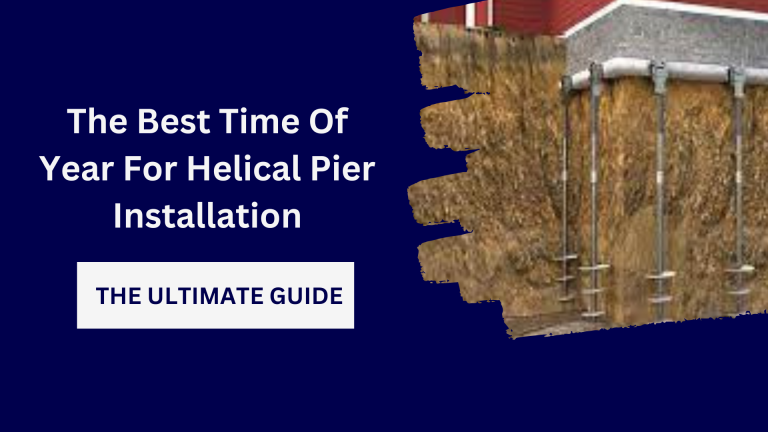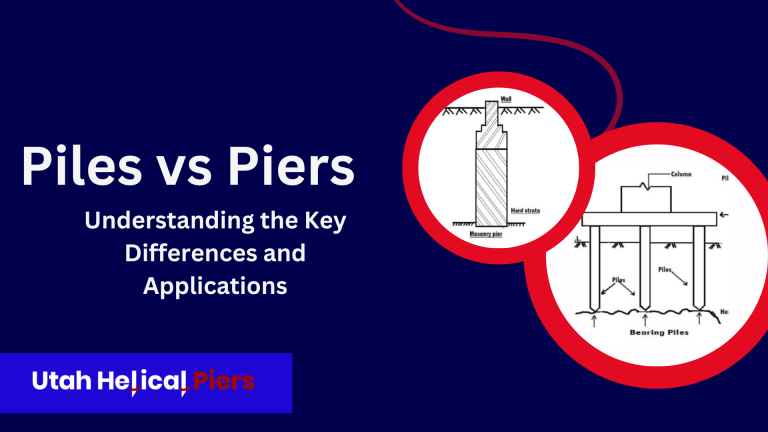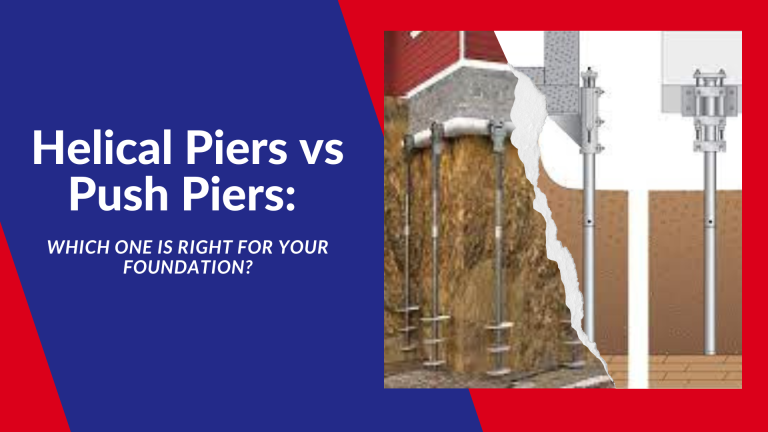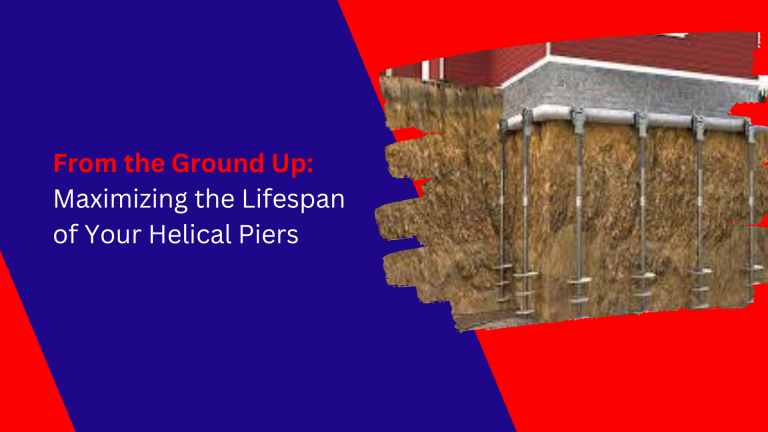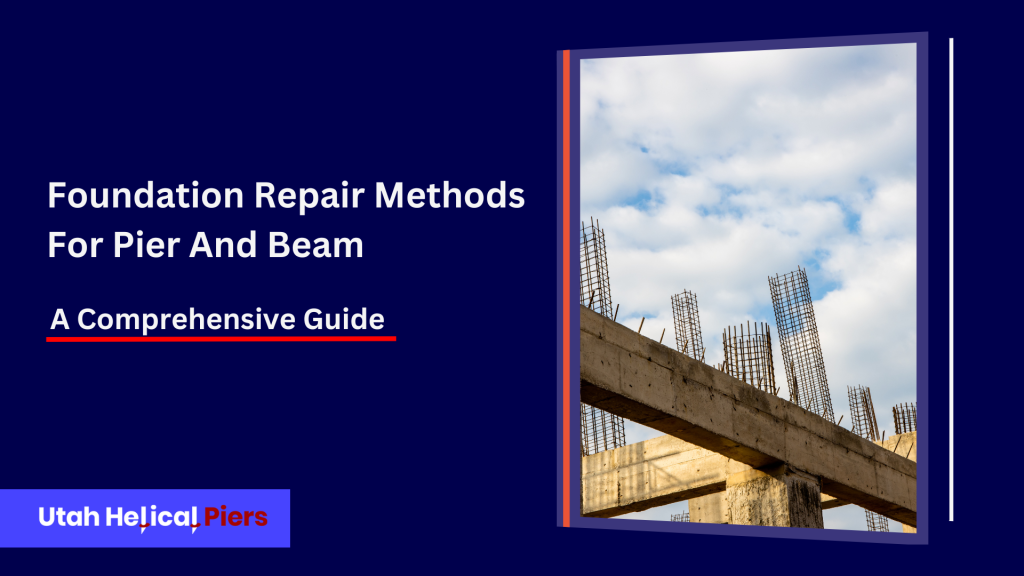
Introduction
When it comes to the foundation of your home, ensuring stability and durability is essential. Pier and beam foundations have been popular for many years due to their versatility and ability to adapt to various soil types. However, like any other foundation type, they may encounter issues over time. In this comprehensive guide, we will explore various foundation repair methods for pier and beam structures, addressing topics such as spacing, leveling, enclosing, converting, and common problems. Additionally, we’ll discuss DIY solutions, repair costs, and techniques for reinforcing your pier and beam foundation.
Foundation Repair Methods for Pier and Beam
Before diving into repair methods, let’s first understand the basics of pier and beam foundations. These foundations consist of concrete piers or blocks that support the weight of the structure, along with wooden beams that span across the piers, supporting the floor joists. The crawlspace created between the ground and the floor provides access to plumbing and electrical systems.
So, here are some of the foundation repair methods for pier and beam foundations:
Reshimming.
This is the most common and least invasive pier and beam foundation repair method. It involves adding shims (small pieces of wood or metal) between the piers and the beams to level the foundation.
Replacing or rebuilding piers.
If the piers have deteriorated or become damaged, they may need to be replaced or rebuilt. This is a more involved repair method, but it can be necessary to restore the foundation’s structural integrity.
Adding underpinning.
Underpinning is the process of installing new piers underneath the existing piers to provide additional support. This is a good option for homes that are experiencing severe foundation settlement.
Installing helical piers.
Helical piers are steel piers that are driven into the ground and anchored into bedrock. They are a good option for homes that are located on unstable soil or that are experiencing severe foundation settlement.
The best pier and beam foundation repair method for your home will depend on the specific nature of the damage. It is essential to consult with a qualified foundation repair contractor to get an assessment of your foundation and recommend the best repair method.
Here are some additional things to keep in mind when considering foundation repair methods for pier and beam foundations:
- The cost of foundation repair can vary depending on the size of the home, the severity of the damage, and the type of repair method used.
- Foundation repair is a permanent solution that can extend the life of your home.
- Foundation repair can be done while you continue living in your home, but following the contractor’s instructions is important to minimize disruption.
If you are concerned about the condition of your pier and beam foundation, it is important to have it inspected by a qualified foundation repair contractor. Early detection and repair can help to prevent more serious problems down the road.
Foundation Spacing for Pier and Beam
Proper spacing between piers is crucial to the stability of your pier and beam foundation. The distance between piers should be determined by the load-bearing capacity of the soil and the weight of the structure it supports. Soil types, climate, and house design all play a role in determining the ideal spacing. Consulting a structural engineer can help ensure the correct pier and beam foundation spacing for your specific property.
How to Enclose Pier and Beam Foundation
Enclosing your pier and beam foundation offers numerous benefits, including improved energy efficiency, protection against pests, and added security. This section will explore different methods of enclosing your foundation, such as skirting, ventilation considerations, and insulation options.
Skirting for Pier and Beam Foundation Enclosure
Skirting is a popular method to enclose a pier and beam foundation. It involves adding a barrier around the perimeter of the crawlspace, creating a seamless look and protecting the area from outside elements. There are different materials to choose from for skirting, including:
Brick Skirting: This provides a durable and aesthetically pleasing option. It offers excellent protection against pests and weather conditions, making it a long-lasting choice.
Stone Skirting: For a more natural and rustic appearance, stone skirting is a viable option. It adds a touch of elegance to the foundation and complements various architectural styles.
Vinyl Skirting: Vinyl is a cost-effective option that comes in various colors and textures. It’s easy to install and maintain, making it a popular choice for homeowners on a budget.
Wooden Skirting: Wood can add warmth and charm to the foundation. However, it requires regular maintenance to prevent decay and termite infestation.
When choosing skirting material, consider factors such as climate, maintenance requirements, and overall aesthetic appeal to make the best decision for your home.
Ventilation Considerations
Proper ventilation is crucial when enclosing a pier and beam foundation. Adequate airflow within the crawlspace helps prevent moisture buildup, which can lead to mold, rot, and other issues. Here are some ventilation considerations to keep in mind:
Foundation Vents: Installing foundation vents allows air to circulate within the crawlspace. These vents are usually placed strategically around the foundation to ensure proper airflow.
Automatic Ventilation Fans: For homes in areas with high humidity or limited natural airflow, automatic ventilation fans can be installed. These fans activate when the moisture level rises, helping to maintain a dry and well-ventilated crawlspace.
Insulated Vents: In regions with extreme temperatures, consider using insulated vents to regulate the temperature within the crawlspace and protect it from freezing during winter months.
Vapor Barriers: Installing a vapor barrier on the ground surface of the crawlspace can help prevent moisture from rising into the enclosed area.
Proper ventilation not only protects the foundation but also ensures the health and safety of your home.
Insulation Options
Insulating your pier and beam foundation can enhance energy efficiency and maintain a comfortable indoor environment. Here are some insulation options to consider:
Crawlspace Insulation: Insulating the walls of the crawlspace can help reduce heat loss in winter and keep the area cooler in summer. Choose insulation materials that are suitable for the climate and provide optimal thermal performance.
Floor Insulation: Insulating the floor above the crawlspace can further improve energy efficiency. Use insulation batts or rigid foam boards between the floor joists to prevent heat transfer.
Duct Insulation: If your HVAC ducts run through the crawlspace, insulating them can prevent energy loss and ensure more efficient heating and cooling.
Sealing Air Leaks: Ensure that all gaps and cracks in the foundation walls and floor are properly sealed to prevent air infiltration and maintain a well-insulated crawlspace.
By selecting the right insulation materials and ensuring proper installation, you can significantly improve the energy efficiency of your home.
Enclosing your pier and beam foundation is a wise investment that brings various benefits. From skirting options to ventilation considerations and insulation choices, these methods will help you create a more comfortable and protected living environment. Don’t hesitate to consult a professional for guidance and assistance in achieving the best results for your specific home and climate.
Pier and Beam Foundation Leveling
Pier and beam foundations, like any other type of foundation, can experience settling over time, leading to uneven floors and potential structural problems. Foundation leveling is the process of restoring the foundation to its original position, ensuring stability and preventing further damage. In this section, we will explore the signs that indicate your pier and beam foundation needs leveling, as well as the different methods used to achieve a level foundation.
Signs Your Pier and Beam Foundation Needs Leveling
- Uneven or Sagging Floors: One of the most apparent signs of foundation settlement is uneven or sagging floors. If you notice that the floors in your home are sloping or feel uneven when walking, it may indicate a problem with the foundation.
- Cracks in Walls and Ceilings: As the foundation settles, it can cause stress on the walls and ceilings, leading to visible cracks. Pay attention to cracks that appear near windows, doors, or corners, as these areas are more susceptible to movement.
- Sticking Doors and Windows: Foundation settling can cause doors and windows to become misaligned, making them difficult to open and close smoothly. If you find it challenging to open or close doors and windows, it could be a sign of foundation issues.
- Gaps Between the Foundation and Structure: Inspect the perimeter of your home, paying attention to any gaps between the foundation and the structure. These gaps may indicate that the foundation has shifted or settled.
- Bouncing or Uneven Floors: If you notice a bouncy or spongy feeling when walking on certain areas of the floor, it could be an indication of foundation problems.
Methods for Pier and Beam Foundation Leveling
When it comes to leveling a pier and beam foundation, various methods can be employed, depending on the extent of the settlement and the specific foundation design. Some common leveling techniques include:
- Adding Shims: Shims, typically made of steel or wood, are inserted between the piers and the beams to raise and level the foundation. This method is suitable for minor settling issues.
- Installing Helical Piers: Helical piers are long, screw-like piles that are drilled into the ground until they reach stable soil. They provide support and lift the foundation back to its original level.
- Adjusting Foundation Piers: If the settling is uneven, adjusting individual foundation piers can help bring the foundation back to a level position. Hydraulic jacks and piers are used to carefully adjust the height of each pier as needed.
- Installing Concrete Piers: In cases of significant settling, concrete piers may be installed to provide additional support and stability to the foundation.
- Underpinning with Steel Beams: Underpinning involves placing steel beams beneath the foundation to support and level it. This method is suitable for severe settlement issues.
Professional Inspection and Assistance
Foundation leveling is a complex process that requires professional expertise and specialized equipment. If you notice any signs of foundation settling in your home, it’s essential to seek the assistance of a qualified foundation contractor or structural engineer. They will conduct a thorough inspection, determine the extent of the settlement, and recommend the most appropriate leveling method for your pier and beam foundation.
Timely foundation leveling can prevent further damage to your home and ensure its stability for years to come. Remember to address any foundation issues promptly and consult professionals who have the experience and knowledge to perform a successful leveling process.
Converting Pier and Beam to Slab Foundation: Cost and Considerations
If you’re considering converting your pier and beam foundation to a slab foundation, it’s essential to weigh the cost and benefits carefully. This section will examine the factors involved in this conversion, including costs, construction requirements, and potential challenges.
Converting a pier and beam foundation to a slab foundation can be a significant undertaking, and it’s important to consider the cost and benefits carefully. Here are some factors to consider :
Cost Considerations:
- The cost of converting to a slab foundation can vary depending on the size of the house, the location, and the extent of the work required.
- The cost of a pier and beam foundation can range from $9 to $22 per square foot, while the cost of a slab foundation can range from $5 to $37 per square foot.
- The average cost of pier and beam foundation repair is around $9,500.
Construction Requirements:
- Converting to a slab foundation typically involves removing the existing pier and beam foundation, excavating the soil, and pouring a new concrete slab.
- The new slab foundation must be designed to support the weight of the house and meet local building codes.
- The process may also involve relocating plumbing and electrical systems that were previously located in the crawl space.
Potential Challenges:
- Converting to a slab foundation can be a disruptive process that requires significant excavation and construction work.
- The process may also uncover additional issues, such as termite damage or soil instability, that can increase the overall cost of the project.
- In some cases, pier and beam foundations may be better suited to the local soil conditions and climate than slab foundations.
It’s important to consult with a professional to assess the feasibility and cost of converting to a slab foundation. They can provide guidance on the best course of action and help you calculate potential costs and benefits.
Common Pier and Beam Foundation Problems
While pier and beam foundations are durable, they can still face issues over time. Understanding common problems such as rot, termite damage, moisture issues, and sagging floors will help you take early preventive measures and address these issues promptly.
here are some of the common pier and beam foundation problems:
Rot.
Wooden beams are susceptible to rot if they are not properly maintained. This can be caused by moisture, which can seep into the crawlspace from the ground or from rain or snow. If the beams are not properly sealed, they can start to rot and decay. This can lead to sagging floors, cracks in the foundation, and other problems.
Termite damage.
Termites are a common problem in some areas. They can eat away at the wood beams in a pier and beam foundation, causing them to weaken and collapse. If you live in an area with termites, it is important to have your foundation inspected regularly to check for damage.
Moisture issues.
Moisture can also cause problems with pier and beam foundations. If the crawlspace is not properly ventilated, moisture can build up and cause the wood beams to rot. It can also lead to mold and mildew growth, which can damage the foundation and make it unhealthy for the people living in the home.
Sagging floors.
Sagging floors are a common sign of a problem with the pier and beam foundation. This can be caused by rot, termite damage, moisture issues, or other problems. If you notice sagging floors, it is important to have the foundation inspected and repaired as soon as possible.
Here are some tips to help prevent common pier and beam foundation problems:
Keep the crawlspace dry. This is the most important thing you can do to prevent moisture problems. Make sure the crawlspace is properly ventilated and that there are no leaks in the foundation.
Inspect the foundation regularly. Have your foundation inspected by a qualified professional at least every 5 years. This will help to identify any problems early on, before they become serious.
Treat for termites. If you live in an area with termites, it is important to have your foundation treated for termites. This will help to prevent them from damaging the wood beams in your foundation.
Seal the wood beams. To prevent rot, it is important to seal the wood beams in your foundation. This can be done with a sealant that is designed for use in crawlspaces.
DIY Foundation Repair for Pier and Beam
Assessing Foundation Damage
Before attempting any DIY foundation repairs, it’s crucial to assess the extent of the damage accurately. This section will guide you through the process of inspecting your pier and beam foundation for signs of damage and providing insights into when to seek professional assistance.
Repairing Sagging Floors
Sagging floors are a common issue in older pier and beam homes. Learn about effective DIY techniques to repair and reinforce floor joists to restore the levelness of your floors.
Replacing Rotted Wood
Wooden components in pier and beam foundations are susceptible to rot, which can compromise the overall integrity of the structure. Discover step-by-step instructions on identifying and replacing rotted wood effectively.
Preventing Moisture Problems
Moisture is a significant enemy of pier and beam foundations, leading to mold, mildew, and potential wood damage. Find out practical DIY tips to prevent moisture buildup and protect your foundation.
Foundation Reinforcement Techniques
Strengthening your pier and beam foundation can extend its lifespan and prevent future issues. Explore various reinforcement techniques, including adding additional piers and using steel brackets.
DIY Foundation Repair Cost and Considerations
Assessing Repair Costs
One of the primary reasons homeowners consider DIY foundation repair is to save money. Understand the factors that impact the overall repair cost and calculate potential savings when opting for a do-it-yourself approach.
When considering DIY foundation repair, it’s important to assess the repair costs and potential savings. Here are some key considerations and average costs
Factors Impacting Repair Costs:
- Type of repair needed
- The severity of foundation issues
- Materials required
- Tools needed
- Labor costs
- Uncovered issues during the repair process
- Excavation costs, if applicable
Average DIY Foundation Repair Costs:
- Foundation crack repair typically costs between $250 and $800.
- Most crack repairs cost between $200 and $1,000, with the average cost around $600.
- The national average cost of foundation repair is $4,500, with a range between $2,000 and $7,500.
- Minor repairs like filling small cracks usually cost a few hundred dollars.
- More extensive foundation repairs can range from $4,000 to $10,000.
- The national average for foundation repairs in 2022 was around $8,000.
It’s important to note that DIY foundation repair may not be suitable for all situations. Some foundation repairs require professional expertise and specialized equipment. Additionally, attempting DIY repairs without proper knowledge and experience can lead to further damage and higher costs in the long run.
If you’re considering DIY foundation repair, it’s recommended to consult with a professional to assess the extent of the damage and determine if it’s a feasible option. They can provide guidance on the best course of action and help you calculate potential savings
The Pros and Cons of DIY Foundation Repair
Pros:
- Cost savings: DIY foundation repair can save you money on labor costs.
- Flexibility: You can work on the project at your own pace and on your own schedule.
- Satisfaction: Completing a DIY project can be rewarding and give you a sense of accomplishment.
Cons:
- Lack of expertise: Foundation repair can be complex and requires specialized knowledge and equipment. Attempting DIY repairs without proper knowledge and experience can lead to further damage and higher costs in the long run.
- Safety concerns: Foundation repair can be dangerous, especially if excavation is required. Professionals have the necessary safety equipment and training to handle these situations.
- Limited scope: DIY foundation repair may only be suitable for minor repairs, such as filling small cracks. More extensive repairs may require professional expertise.
It’s important to weigh the pros and cons of DIY foundation repair before deciding to take on the project. While cost savings can be attractive, it’s important to consider the potential risks and limitations of DIY repairs. Consulting with a professional can help you determine if DIY foundation repair is a feasible option for your specific situation.
Conclusion
Maintaining a solid and stable foundation is essential for the longevity of your home. By understanding the foundation repair methods for pier and beam structures, you can proactively address issues, prevent further damage, and ensure the safety and comfort of your living space. Whether you opt for DIY solutions or hire a professional, regular inspections and prompt action are key to preserving your pier and beam foundation for years to come.

